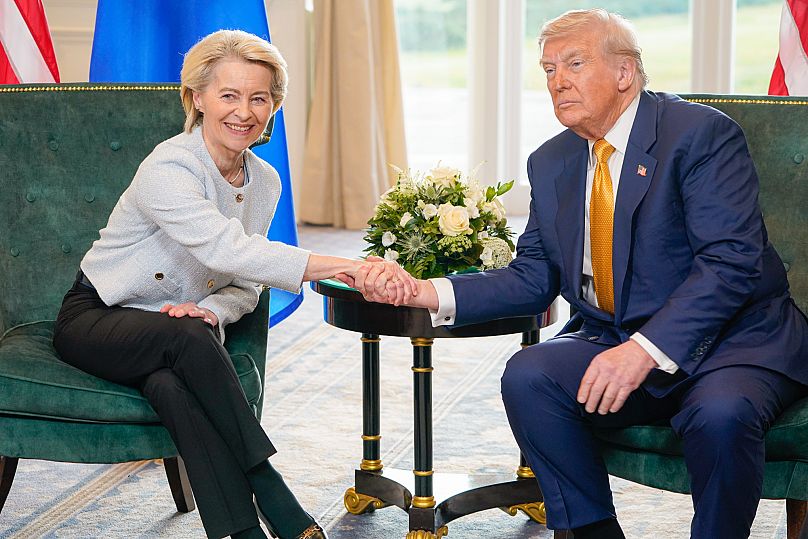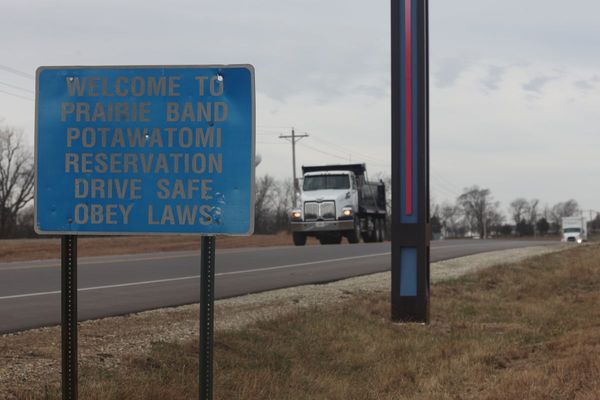The current status of tariffs on pharmaceuticals between the EU and the US remains uncertain, despite the announcement on Sunday of a new transatlantic trade agreement.
The situation is particularly sensitive given the mutual dependency in the sector: the US imports large volumes of critical pharmaceuticals from the EU, while EU-based pharmaceutical companies—especially in Ireland and Denmark—rely heavily on access to the American market.
Although the new trade agreement will officially enter into force on 1 August, pharmaceuticals will not be subject to a 15% tariff which will be slapped on most goods imported from the European Union to the United States.
This does not mean that there won’t be tariffs at all on pharmaceuticals, as the US is still conducting an investigation into imported pharmaceuticals to assess whether they threaten US national security.
For this reason, pharmaceuticals were technically excluded from yesterday’s formal agreement, several EU sources confirm, as the US could not commit to any decision on tariff changes, which will only come after the conclusion of that process.
However, if tariffs are introduced following the investigation, the EU expects the US—under President Trump—to honour the informal understanding reached during negotiations.
This includes a cap of 15% on tariffs, which the EU considers "all-inclusive", meaning it should apply even to products still under investigation, such as pharmaceuticals and semiconductors.
“I believe that this commitment will be honoured and respected in this case as well,” said EU Trade Commissioner Maroš Šefčovič during a press briefing following the deal.
So, what happens after 1 August?
In the short term, nothing will change.
Despite earlier reports suggesting the US would impose a 15% tariff on pharmaceuticals too in line with most EU goods, that is not expected to happen immediately.
“There will be no tariffs on pharmaceuticals this Friday,” clarified a senior EU official who participated in the negotiations with President Trump in Scotland.
Most pharmaceutical products traded between the EU and the US currently benefit from a 0% tariff rate under the Most-Favoured Nation (MFN) framework. This is consistent with prior US-EU trade arrangements and World Trade Organization (WTO) commitments.
As a result, EU pharmaceutical exports have faced no tariff barriers when entering the US market—a condition that remained unchanged even after Trump's so-called "Liberation Day", when he announced imposing blanket tariffs on goods.
Uncertain outcome of the US investigation

But tariffs on pharmaceuticals are expected to come at one point.
The key uncertainty revolves around the ongoing Section 232 investigation being conducted by the Trump administration.
This probe, authorised under the Trade Expansion Act of 1962, is intended to assess whether imports of pharmaceuticals (and other products as well such as semiconductors) threaten US national security.
The investigation’s conclusions could lead to unilateral actions by the US, including higher tariffs or import restrictions, independent of the broader trade deal struck yesterday.
“[During the talks] President Trump wanted to make clear that they still have full freedom to conclude the 232 investigations and to choose any policy measures as a result,” said another EU negotiator.
While EU officials cannot predict the outcome of the US investigation, they believe it is nearing completion.
“These are two investigations—pharmaceuticals and semiconductors—that are pretty close to conclusion,” an official noted.
If the US does impose tariffs following the investigation, the EU expects these to be capped at 15% for both sectors, in line with the political understanding reached during the trade talks.
EU’s bet on pharma tariffs
The EU’s strategy is clear: even though Trump could not legally commit yesterday to tariffs on pharmaceuticals while the investigation is ongoing, the EU insisted on a 15% ceiling across all sectors, with no exclusions for pharmaceuticals.
A senior EU official added that this understanding is backed by a broader political commitment, including planned investments by pharmaceutical companies in the US and pressure from the industry on both sides of the Atlantic to collaborate more closely.
“There is a clear understanding that investments, supply chain integration, and joint R&D efforts should all fall under the special 15% regime,” the official explained.
Still, the EU acknowledges that this is not yet a legally binding commitment.
“Is this a legal commitment? No, not at this stage. That would have to come through an executive order once the US concludes its investigation,” the source continued.
For now, both pharmaceutical and semiconductor products remain at zero-duty 0rates. No changes will occur on 1 August, but that could change once the US finalises its Section 232 investigation.







